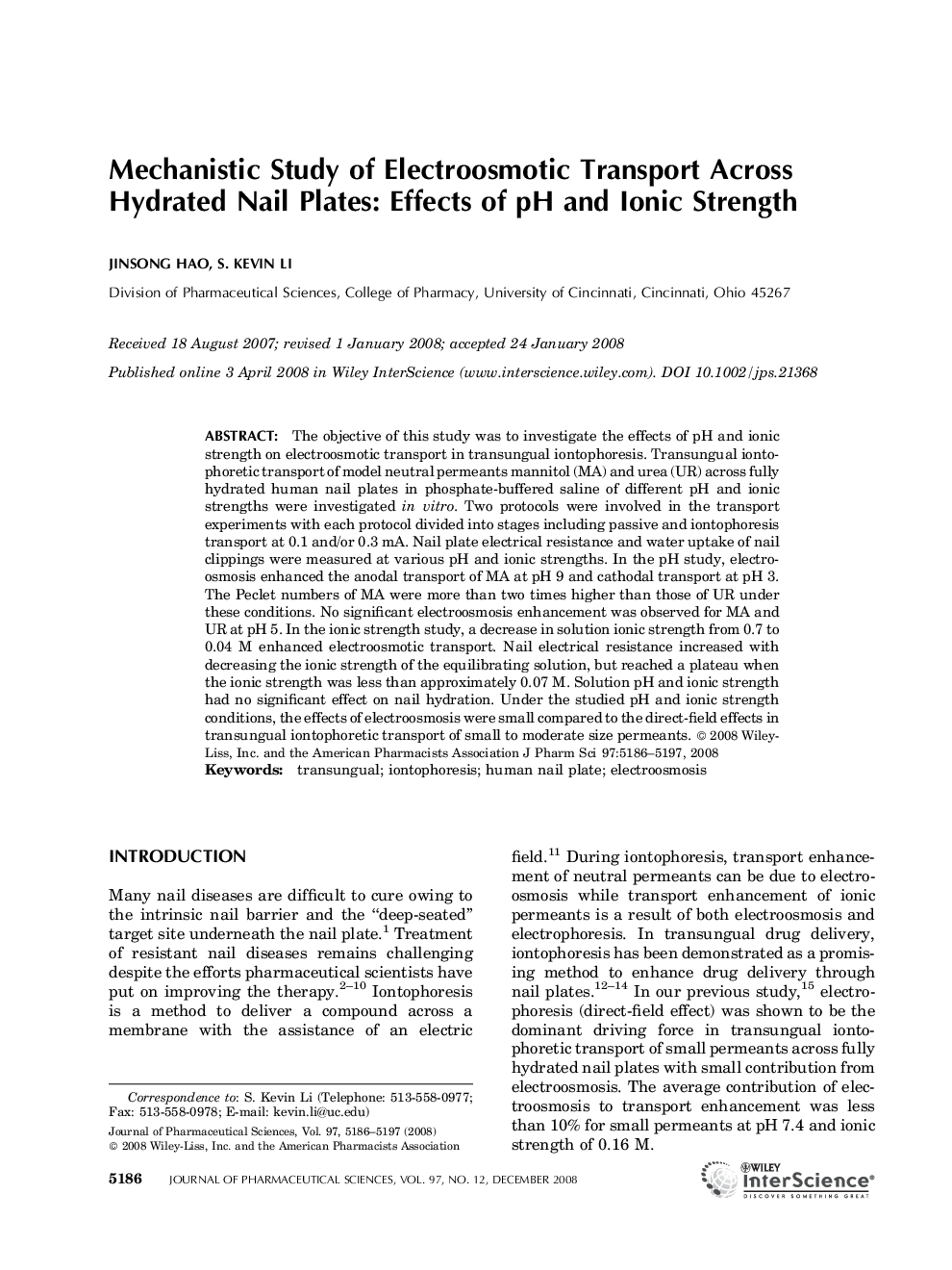| Article ID | Journal | Published Year | Pages | File Type |
|---|---|---|---|---|
| 2487400 | Journal of Pharmaceutical Sciences | 2008 | 12 Pages |
Abstract
The objective of this study was to investigate the effects of pH and ionic strength on electroosmotic transport in transungual iontophoresis. Transungual iontophoretic transport of model neutral permeants mannitol (MA) and urea (UR) across fully hydrated human nail plates in phosphateâbuffered saline of different pH and ionic strengths were investigated in vitro. Two protocols were involved in the transport experiments with each protocol divided into stages including passive and iontophoresis transport at 0.1 and/or 0.3 mA. Nail plate electrical resistance and water uptake of nail clippings were measured at various pH and ionic strengths. In the pH study, electroosmosis enhanced the anodal transport of MA at pH 9 and cathodal transport at pH 3. The Peclet numbers of MA were more than two times higher than those of UR under these conditions. No significant electroosmosis enhancement was observed for MA and UR at pH 5. In the ionic strength study, a decrease in solution ionic strength from 0.7 to 0.04 M enhanced electroosmotic transport. Nail electrical resistance increased with decreasing the ionic strength of the equilibrating solution, but reached a plateau when the ionic strength was less than approximately 0.07 M. Solution pH and ionic strength had no significant effect on nail hydration. Under the studied pH and ionic strength conditions, the effects of electroosmosis were small compared to the directâfield effects in transungual iontophoretic transport of small to moderate size permeants. © 2008 WileyâLiss, Inc. and the American Pharmacists Association J Pharm Sci 97:5186-5197, 2008
Related Topics
Health Sciences
Pharmacology, Toxicology and Pharmaceutical Science
Drug Discovery
Authors
Jinsong Hao, S.Kevin Li,
